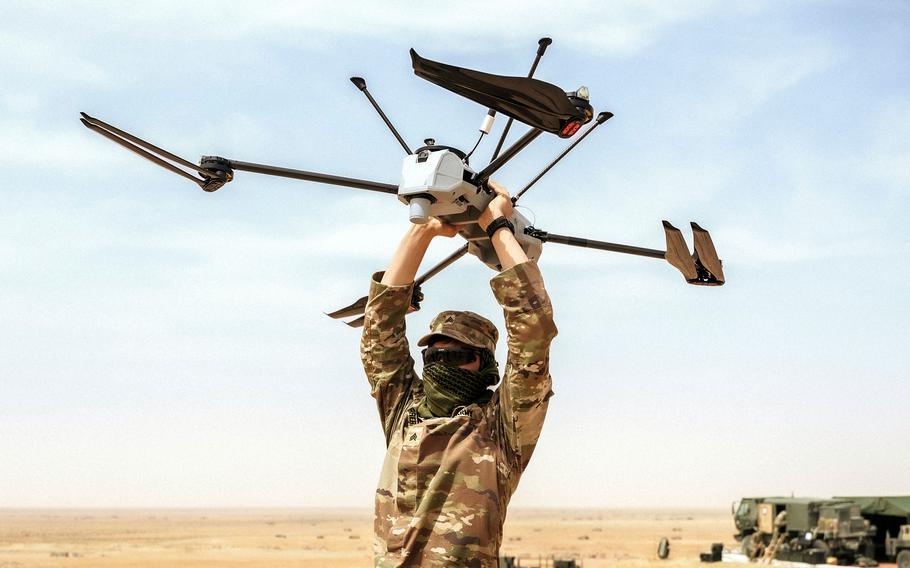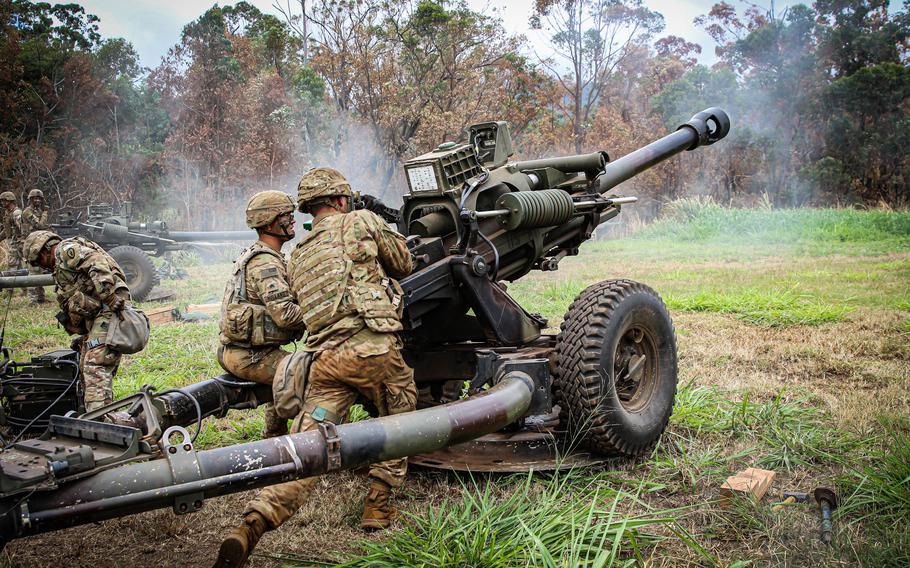
Sgt. Adrian Herrera, assigned to the 173rd Airborne Brigade, calibrates a C-100 drone for a test flight at Ben Ghilouf Training Area, Tunisia, April 20, 2025. The Army wants to incorporate more drones into combat units and put less emphasis on manned aircraft. (Jose Lora/U.S. Army)
The Army will cut 1,000 jobs from its main headquarters, shrink attack helicopter formations and lighten the load for infantry brigades, the service’s top leaders said in a message to the force this week.
A letter sent to Army commands Thursday details a series of changes to force structure in line with a directive issued the day before by Defense Secretary Pete Hegseth.
“This initiative will reexamine all requirements and eliminate unnecessary ones, ruthlessly prioritize fighting formations to directly contribute to lethality, and empower leaders at echelon to make hard calls to ensure resources align with strategic objectives,” Army Chief of Staff Gen. Randy George and Army Secretary Daniel Driscoll wrote in the joint letter.
A second round of initiatives will be announced in the coming months, the two Army leaders said.
Called the Army Transformation Initiative, the effort is part of a plan to prepare soldiers for a battlefield where drones and emerging technologies are expected to dominate.
“Sensors and decoys are everywhere,” the letter said. “Dual-use technologies are continuously evolving and outpacing our processes to defeat them. To maintain our edge on the battlefield, our Army will transform to a leaner, more lethal force by adapting how we fight, train, organize, and buy equipment.”

Soldiers with the 2nd Infantry Brigade Combat Team, 25th Infantry Division fire artillery on Oahu, Hawaii, in 2020. The Army will convert all infantry brigade combat teams to mobile brigade combat teams, according to a letter sent to Army commands on May 1, 2025, following a directive issued by Defense Secretary Pete Hegseth. (Stephanie Sweeney/U.S. Army)
At the tactical level, that means incorporating more drones into combat unit formations and putting less emphasis on manned aircraft.
To that end, the Army will reduce one aerial cavalry squadron per aviation brigade in the active component, George and Driscoll said. It also will consolidate aviation sustainment requirements.
Ground units will be adapted as well. All infantry brigade combat teams will be converted to mobile brigade combat teams, resulting in a leaner formation, according to the letter.
“We are trading weight for speed, and mass for decisive force,” it said.
The letter didn’t specify what the exact changes to brigade configurations would look like. However, trading weight and mass for speed means that such units are likely to have fewer tanks and other armored vehicles.
The changes center on organizing the Army to more effectively counter China in the Indo-Pacific, which is the Pentagon’s top priority. As part of the force structure overhaul, soldier rotations to the Pacific are expected to increase.
The Army leaders also reiterated some of the changes announced by Hegseth, including the merger of Army Futures Command and Training and Doctrine Command into one headquarters.
That “aligns force generation, force design, and force development under a single headquarters,” the letter said.
Meanwhile, U.S. Army Forces Command will become Western Hemisphere Command through the consolidation of Army North and Army South.
Such moves will reduce the number of general officers, which has been a priority for Hegseth.
The Army remains committed to introducing new long-range missiles and modernized unmanned systems into formations, George and Driscoll said. The service also will field the M1E3 tank as planned.
In addition, the Army will cancel procurement of “outdated crewed attack aircraft” such as older versions of the Apache helicopter and various tactical vehicles.
“Yesterday’s weapons will not win tomorrow’s wars,” the leaders said.